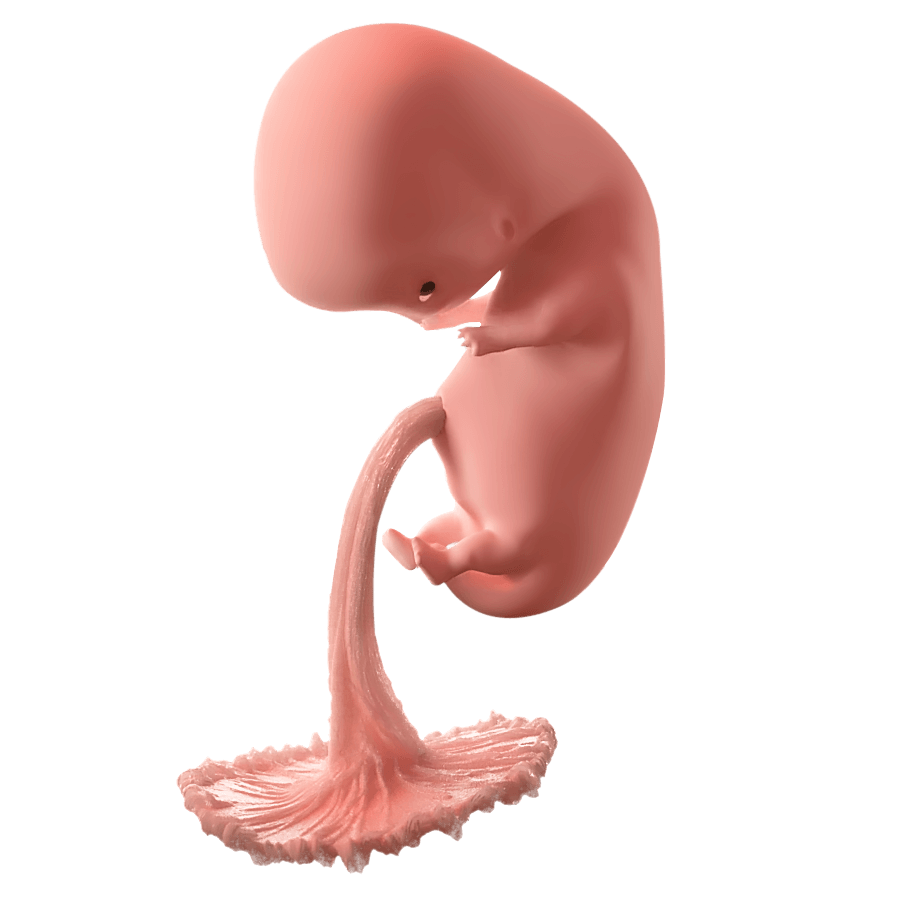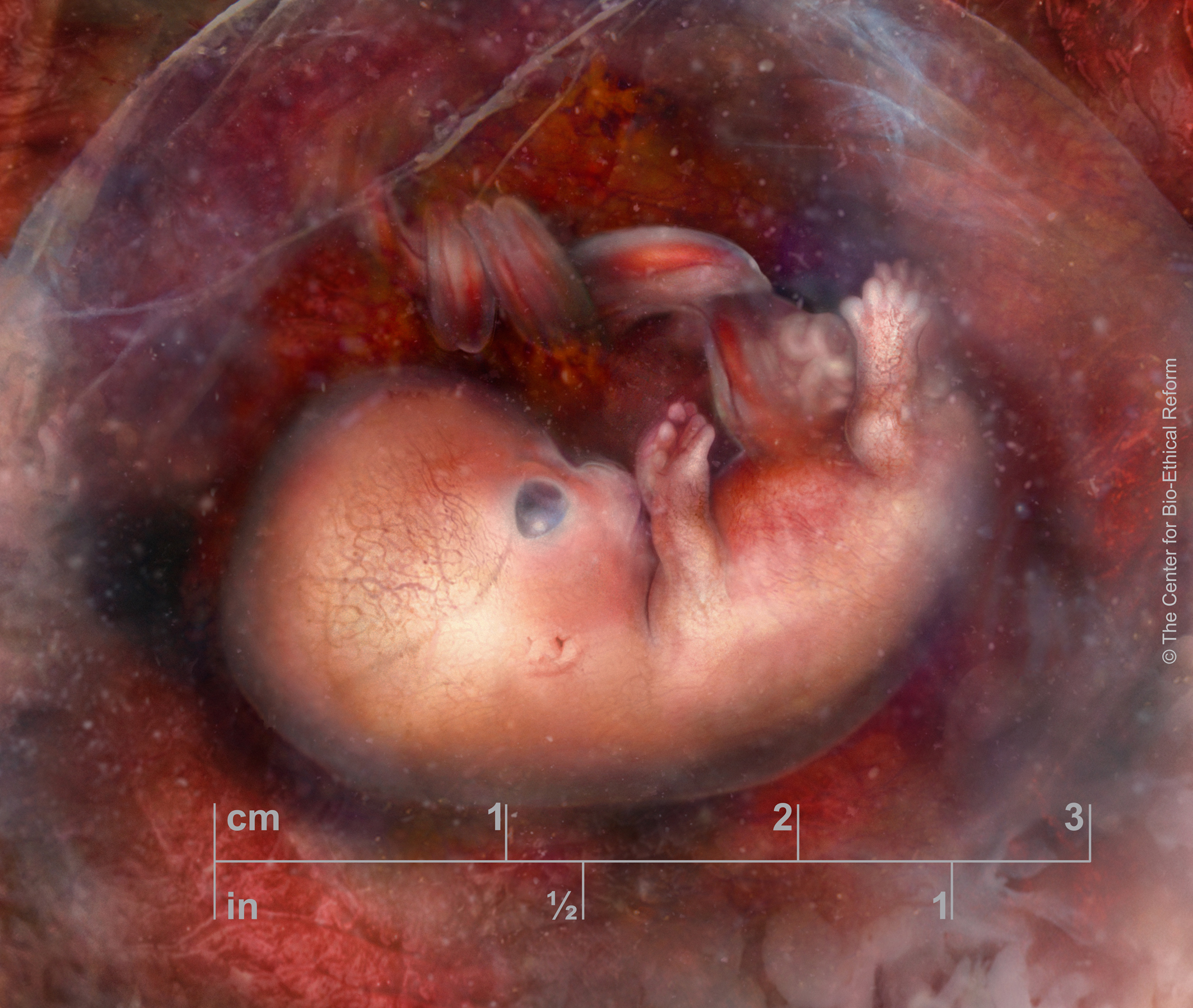Become A Defender of Life
Your donation helps us continue to provide world-class research in defense of life.
DONATECharlotte Lozier Institute
Phone: 202-223-8073
Fax: 571-312-0544
2776 S. Arlington Mill Dr.
#803
Arlington, VA 22206

Week 9
Brain activity and spontaneous movements
- Post-conception week 7
- Days 42-48
- Gestational Week 9
The embryo’s heart has formed all four chambers.1
The embryo’s heart rate peaks in week 9 around 170 beats per minute, making the heartbeat almost twice as fast as mom’s.2
Pockets of cells that resemble taste buds appear on the tongue.3
Knees and elbows appear.
Toes start to form, and the tissue between the fingers becomes thin.4
This week, the cortex, or the thinking and sensing part of the brain, doubles in size.5 The inner ear starts forming. Sounds turn into brain signals in the cochlea, a snail shaped tube in the inner ear. The tube that becomes the cochlea grows in a spiral fashion so that two weeks later it has completed 2 ½ turns. The outer ear also starts forming.
Brain cells, called neurons, have already connected to one another. Networks of neurons produce immature patterns of brain activity, or “brain waves,” that have been recorded during surgeries on ectopic pregnancies when the embryo was 8 ½ weeks gestation.6 The preborn baby starts spontaneously moving his arms, hands, and legs.7 Ultrasound recordings also show that the embryo can hiccup.8
Cartilage starts to harden and become bone in week 9. The first bones to form in the embryo are the collar bone and the jaws.9 Knees and elbows start developing.
The first several weeks of eye development are like watching an orchestra warm up. Different cells and tissues develop rapidly as they prepare to work together to create a functional eye. The eye begins to develop 22 days after conception.10 First, bubbles of neural tissue grow from the young brain toward the surface of the face. The neural tissue causes some of the outer tissue to become transparent and form the cornea and lens. Simultaneously, the bubbles of neural tissue fold into the shape of a catcher’s mitt to form the back of the eye. The front layer of tissue will become the colorful iris, and the back layer of tissue will become the light-sensitive retina. By week 9 the pigments in the retina are visible. Also, the critical neural connection between the back of the eye and the brain, called the optic nerve, has formed.11










